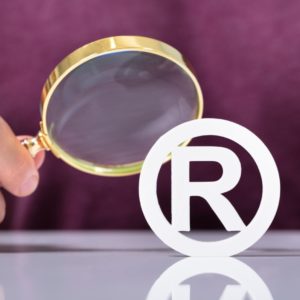One of the first tasks when starting a new business project, or introducing a new product or service is to take care of the safety of the future brand. It goes without saying, still many entrepreneurs in business with other important tasks simply postpone this or completely forget about it. This is especially true for managers of smaller enterprises when one person really has a lot going on. If you are an entrepreneur or investor – keep in mind that an unprotected brand is a big risk for all investments in product design, marketing and sales.
Protecting your brand name and other essential visual elements is important if you want to avoid conflicts and misunderstandings. Properly protected intellectual property is more valuable, it can be sold, licensed, invested in the share capital, used as collateral to attract investment, etc.
Let me ask, do you know an entrepreneur who is risking the security of his brand? In my practice, we often help to resolve conflicts related to trademark rights. However, you should know that this is a time-consuming process that involves a great deal of risk and expense that could have been avoided by taking care of brand security in a timely manner.
Common conflicts and issues related to brand security

1. Company is already using a brand name and later finds out that the same (or a very similar) trademark has already been registered.
In such a situation, the question arises as to whether it is possible to agree with the proprietor of the earlier registered trademark on coexistence and the division of market areas (or territories). You can imagine that if the proprietor of prior trademark registration is operating in the same field, it is unlikely that he will be interested in coexistence. In the worst situation, the only option left for you will be “rebranding”.
Rebranding can be inconvenient and costly. Of course, it can also be a new beginning for building a better and stronger brand… If you want.
2. Company has chosen a brand name, but later discovers that the chosen trademark is inherently unregistrable.
If the trademark is inherently not registrable, it is not possible to obtain exclusive rights to the chosen designation. In other words, you will never be able to prevent others from using similar names or symbols. There is an extensive list of criteria that determine what can be registered as a trademark. The key is to choose a trademark that is not descriptive and does not contain prohibited symbols. If a trademark is not registrable, it cannot be commercialized and has virtually no value.
In some cases, unregisterable trademarks can become registerable after a certain time of using them in commerce, but this is another story.
3. Company did not register trademarks in a timely manner, and cooperation partners (or competitors) have applied for trademark registration first.
There are often situations where a company has not registered a trademark at all or has not registered it in a timely manner in all the countries in which it plans to market products or provide services. And then unfair partners or competitors file for the exact same brand name first…
Trademark registrations applied in bad faith are mainly aimed at blocking the market or blackmailing the enterprise. Unfortunately, such cases are very common in practice! If you ask – can such situations be successfully solved through courts? Yes, they can, only it can be a very expensive and time-consuming process.
The above examples are only a part of all potential problems that can happen when brand protection is disregarded. Trademark registration is a tool to increase the safety and value of your brand.
When trademark conflicts arise there are many strategies and tactics to find the best solution. You can rely on experienced professionals to help you find the most appropriate solution. Still, all this will be more expensive than a timely and correct trademark application.
What happens when a trademark conflict starts?
There are companies that can afford to sue for years for the right to register and use the intended trademarks. For example, the famous brand Tesla (Tesla inc.) has been litigating for decades with companies that have also registered or applied for the name Tesla both in similar and different areas of business. But… Firstly, not all companies can afford it financially. Secondly, not everyone wants to take risks without knowing whether they will be able to prove their right to the chosen name or designation. And thirdly, the business has to reckon with a long period of uncertainty as to whether and how much can be invested in the design and marketing of the chosen brand.
Therefore, many entrepreneurs are forced to rebrand. This can be not only financially but also a psychologically unpleasant moment. You can imagine – how an entrepreneur would feel seeing that the name, all brand identity elements (including packaging, social media names etc.) can no longer be used.
To protect yourself and your business from forced rebranding, trademarks must be adequately protected.
PerfectTrademark.info
Brand name and design ideas need to be checked first!
When you have chosen the brand name, it might feel fresh and unique. Many brand creators feel like they have chosen the name no one else could think of. It is possible, and when it happens it is a great success. However, it should be noted that more than 40,000 (!) new trademarks are registered in the world every day (!), and at the same time, the number of letters in alphabets remains the same.
Therefore, before making any investment in a brand (logo, website, designs, marketing), make sure that the name and logo are free to use. To have a long-lasting and stable brand your trademarks must be unique. You should pick something that is not confusingly similar to already registered trademarks or trademarks in use in all the countries where you plan to distribute, advertise, and sell your products.
Prior right search must be conducted in the relevant trademark registers, business registers, as well as on the Internet in general. Since trademark search and the interpretation of the results impact your brand future, I recommend entrusting the prior right search to a professional trademark attorney. This will give you comprehensive information about the situation in the market together with risk analysis and advice on how to proceed.
If the trademark is registrable and free to register and use, you can plan a protection strategy.
Trademark registration is not mandatory. Anyone may use the signs in the course of trade without registering them. However, when you are planning a long-term business and serious investments in marketing and products, the trademark registration will be the best investment in brand safety.
What is the difference between a registered and an unregistered trademark?
The legislation in many countries provides the protection of unregistered trademarks. To protect a trademark that is not registered, it must already be in use and have gained some recognition in relation to specific goods or services. Also, you can protect an unregistered trademark if you can prove a competitor’s bad faith. Protecting unregistered trademarks is a costly and complicated process with huge risks. Still – possible.
Important trademarks must be registered!
If you are planning an ambitious project, attracting significant investments, I recommend checking the trademark ideas and applying for registration timely – before the new brand name appears in public. Don’t talk about your genius ideas before you have protected them. All Big Brands apply for trademark registration before announcing the new products to the market.
Application for registration is a way to protect trademarks that are under development and not yet used.
The proprietor of a registered trademark may prohibit others:
- Use (printing, affixing) of identical or confusing similar marks on the goods or their packaging.
- Offering, placing on the market or storing goods with a view to placing them on the market in connection with such trademarks.
- Offering or providing services in connection with protected trademarks.
- Imports or exports of goods under such designations.
- Use of trademarks or their essential elements in a company name, trade name or other designation used to distinguish goods or services on the market.
- Use of trademarks or similar marks in the name of a domain if the website is used in connection with the distribution of identical or similar goods or services.
- Use of trademarks in business documents related to the distribution of goods or provision of services.
- Use of identical or confusingly similar terms in advertising.
When you do not need to register trademarks?
The answer is simple – do not apply for trademark registration if you have no reason to protect the name or it is impossible to protect it.
If you have a short term product or you do not mind someone else using identical or confusingly similar designations, or you believe that no one else would like to use this name you can disregard trademark registration.
Also, a trademark cannot be registered if it is descriptive. For example, chocolate produced in London can be called “London Chocolate”. But it will not be allowed to register this name alone as a trademark. London Chocolate should be free to use for everyone who produces (or sells) chocolate in London.
There can be cases where trademarks can be relatively secure even without registration. For example, when competitors are not interested in using a particular trademark. It can be in the case when a trademark is your name or website address. Note that domain names can be protected with trademark registration!
In the case of goods, when different distributors and agents are involved, trademark registration is a must-have.
Ieva Zvejsalniece

Service marks are copied less frequently. In the case of goods, when different distributors and agents are involved, trademark registration is a must-have. This is because the service provider will always be identifiable, but the goods reach the final consumer through a variety of channels. The origin of goods is firstly identified by the name, logo or packaging as a whole. To prevent competitors from copying your brand name or other important brand elements, trademarks must be registered.
The role and value of the brand
We are living in a time when brands are the most valuable business assets. The brand in itself includes the business name, logo, product names and designs, communication style, business values, reputation and overall image. Each brand is built on a trademark or even several. When building a brand (just like a house), the foundations must be appropriate, stable and secure.
If your business, service, or product is successful (or you expect it to be successful), you should pick a unique name, and secure it with trademark registrations.

What are the first steps to trademark registration?
- Assess and define in which countries (markets) you want to protect your brand, and what are the priorities.
- Evaluate which trademarks must be protected first.
- Create an appropriate and accurate list of goods and services. The list should include goods and services that the company currently offers, as well as those that it plans to introduce in the next five years. The list should be in accordance with the latest edition of the Nice classification.
- Determine who will be the owner (or owners) of the trademarks. This is an important decision that will affect future commercialization opportunities.
- If you are not a professional in the trademark strategy and protection field, find your trademark attorney. She will help you with the search, strategy, and filing of the applications, or will do this for you.





